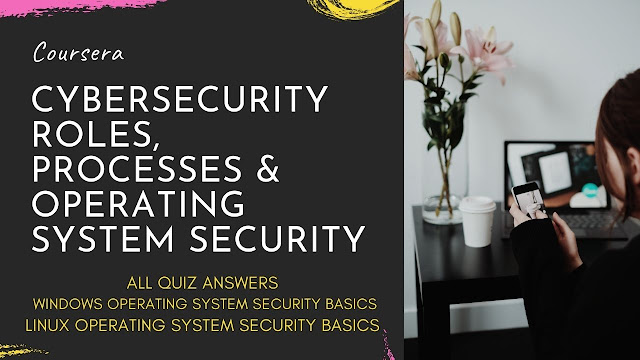User and Kernel Modes
Q1) How many unique address spaces are used by applications running in kernel mode ?
- 1
File Systems and Directory Structure
Q1) Which two (2) of these file systems could you use to format a 64 GB USB drive ?
- NTFS
- FAT32
Q2) Where does Windows 10 store 64-bit applications ?
- \Program Files
- Shortcuts and Commands
Q1) Which shortcut will close all applications ?
- Alt+F4
Q2) What is the shortcut for saving a screenshot ?
- Win+PrtScn
Shortcuts and Commands
Q1) Which shortcut will close all applications ?
- Alt+F4
Q2) What is the shortcut for saving a screenshot ?
- Win+PrtScn
Windows Operating System Security Basics
Q1) What Windows mode do users interact with directly ?
- User mode
Q2) What does Windows create every time an applications is started in user mode ?
- A process.
Q3) If you are setting up a new Windows laptop with a 128Gb hard drive and you want only a single file partition on the drive, which file systems can choose from ?
- NTFS
Q4) A file name in Windows must be unique where ?
- Within the same directory.
Q5) Windows 10 can be purchased for which versions ?
- 32 bit or 64 bit.
Q6) If you want to roll back or undo an action, what shortcut should you use ?
- Ctrl-Z
Q7) Which shortcut will switch between running applications ?
- Alt-Tab
Q8) Where does Windows 10 store 32-bit applications ?
- \Program Files (x86)
Q9) What is the shortcut to open the Task Manager
- Ctrl+Shift+Esc
Key Components
Q1) Which three (3) statements about Linux are True ?
- Linux guarantees end users freedom to run, study, share, and modify the software.
- Linux is an open source operating system.
- Linux is licensed under the General Public License (GNU).
File systems
Q1) Executable files such as ping, grep and cp are stored in which directory ?
- /bin
Linux Basic Commands
Q1) The Linux “kill” command does which of the following ?
- Stop an executing process.
Q2) What permissions can be set on a file in Linux ?
- read, write, execute
Q3) Which basic Linux command deletes an empty directory ?
- rmdir
Q4) Which is not a group that can own a file ?
- anybody
Linux Operating System security basics
Q1) Which three (3) groups can "own" a file in Linux ?
- user, group, everybody
Q2) What can be known about a file with permissions set to "-rwxr-x-r--" ?
- The file is not a directory; the user can read, write and execute the file; the group cannot modify the file, and others not in the group an read it only.
Q3) A person using Linux would normally interact directly with which ?
- The shell.
Q4) In the Linux file system, what is the highest level in the directory structure ?
- root
Q5) In Linux, a directory is a special type of ____.
- file
Q6) What does the nano command do ?
- nano is a basic text file editor.
Q7) Application configuration files are usually stored in which directory ?
- /etc
macOS Resources Knowledge Check
Q1) What application can you use to see all the active running applications and processes on macOS ?
- Activity Monitor
Q2) What feature in macOS prevents unauthorized applications from being installed ?
- Gatekeeper
Q3) Which three (3) utilities are found when booting macOS to the recovery partition? (Select 3)
- Safari
- Time Machine
- Disk Utility
***************************************************************************************************************************
Cybersecurity Roles, Processes & Operating System Security
********************************************************************************************************************************






0 Comments